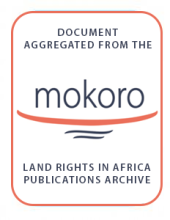Land Library Search
Through our robust search engine, you can search for any item of the over 73,000 highly curated resources in the Land Library.
If you would like to find an overview of what is possible, feel free to peruse the Search Guide.
/ library resources
Showing items 1 through 9 of 62.These messages were developed based on the field experience in fragile and crisis affected contexts of UN-Habitat and the partners of the Global Land Tool Network and the HLP Area of Responsibility of the Global Protection Cluster. They are a quick reference on how to empower
Sustainable land governance requires that all members of a community have equal rights and say in decisions that affect their collectively held lands.
A FIAN study reveals how digital technologies have become new tools for land grabs and sources of profits. Based on research in Brazil;Indonesia;Georgia;India and Rwanda;the study shows that the use of digital tools in land governance exacerbates existing forms of exclusion.
A study commissioned by IIED. With less than 20 percent of landholdings in Uganda currently registered;land governance is at the forefront of a profound change as customary land is demarcated and registered.
Argues that the COVID-19 outbreak has disrupted land governance;which is vital in achieving inclusive economic growth;sustainable development and food security.
In Kasangulu;a city of about 28,000 people on the outskirts of Kinshasa;the Drones for Land Clarification and the Empowerment of Women project is demonstrating how digital tools and participatory processes can help vulnerable communities formalise and protect their land and property rights;w
Combining both written analysis and video interviews;this ‘longreaddetails the impacts on women’s lives of three approaches developed by IIED partners in Tanzania;Ghana and Senegal to reinforce land governance structure in rural communities to make them gender-inclusive.
Examines the link between land and water grabbing, the people that are most impacted by this, and legal frameworks related to both land and water rights. Describes the impacts of land and water grabbing in Kenya and Ethiopia.
Contains the common goal, delivery challenges, five stories and takeaways, larger lessons.

